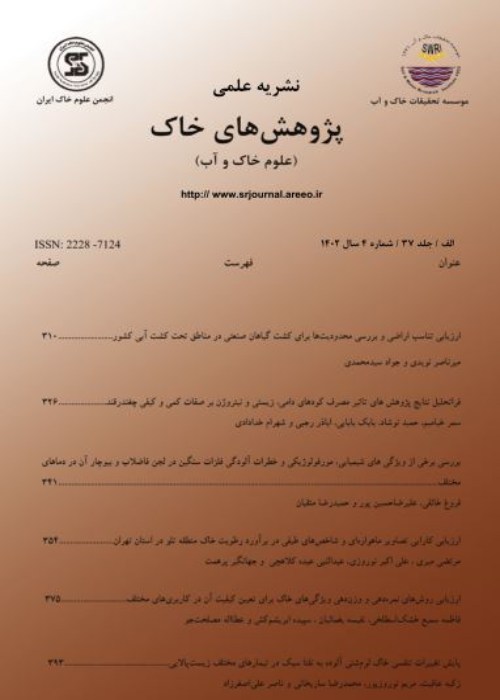Effect of Background Concentration of Titanium Dioxide Nanoparticles on Their Transport in Unsaturated Soils
To manage the positive and negative aspects of application of nanomaterials to natural systems, it is necessary to know the distribution and fate of these materials in such systems. In this regard, the nanoparticle background concentration is one of the factors affecting the transfer process. In this study, in order to investigate the effect of background concentration on the transport of titanium dioxide nanoparticles, transport of TiO2 nanoparticles was first investigated in undisturbed soil columns under different flow rates. The flow rates were equal to the saturated hydraulic conductivity (Ks), 0.9 Ks, 0.7 Ks,and 0.5 Ks (unsaturated flow) applied by peristaltic pump (BT100-1F) to the different soil columns. Then, in order to investigate the effect of the first experiment (background concentration after the first experiment) on subsequent experiments, in a column after the saturation flow test and measuring the outflow and determining the concentration of TiO2 nanoparticles as a function of time, flow rates at unit volume of 540, 420, and 300 μL/min, respectively, are 0.9, 0.7 and 0.5 times the saturated hydraulic conductivity, respectively. [H1] Parameters explaining the transport of nanoparticles using measured data of breakthrough curves based on one-site sorption model and one kinetic site sorption model were estimated. At 540 μL/min, the amount of TiO2 nanoparticles in outflow from the column was lower relative to the absence of the background concentration due to the increase in the concentration of nanoparticles and, therefore, the possibility of more collisions and formation of larger aggregates that caused trapping (straining) them in the pores of the soil. By decreasing the flow rate from 540 to 420 and then 300 μL/min, there was no background concentration in the soil column due to the increase of the nanoparticles in the soil column and the lack of sorption site for more nanoparticles were introduced into the outlet from the column[H2] . Therefore, due to the effect of TiO2 NPs background concentration on the transfer of these particles in the soil, it is necessary to determine their background concentration in the contaminated soil and water where TiO2 NPs are used for remediation of contamination. Also, effect of background concentration on the transfer process depending on the influent flow rate should be considered. In the one kinetic sorption site model, taking into account the detachment coefficient of TiO2 nanoparticles, the results of estimation the nanoparticles transport through soil column were significantly improved (R2>0.89, ME, and RMSE were also much lower than the one site sorption model at all flow rates).
- حق عضویت دریافتی صرف حمایت از نشریات عضو و نگهداری، تکمیل و توسعه مگیران میشود.
- پرداخت حق اشتراک و دانلود مقالات اجازه بازنشر آن در سایر رسانههای چاپی و دیجیتال را به کاربر نمیدهد.



